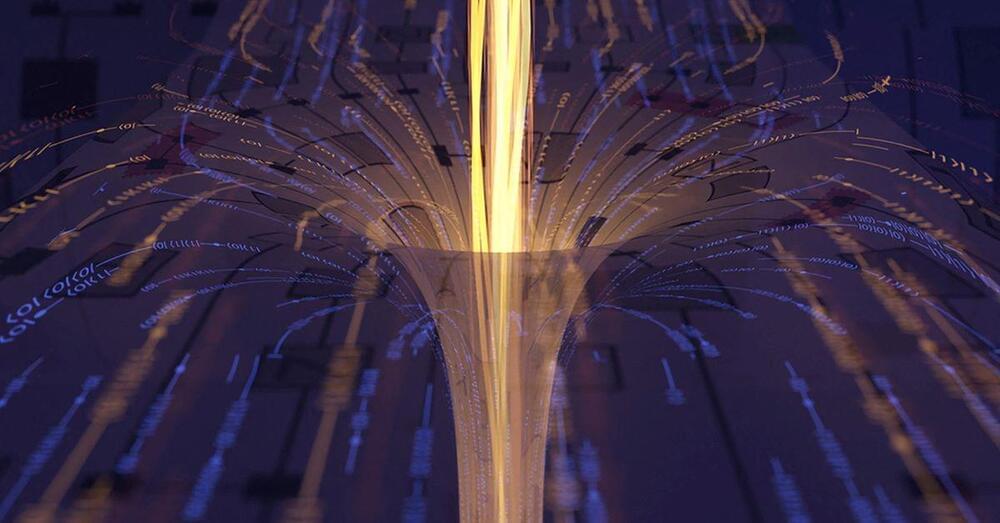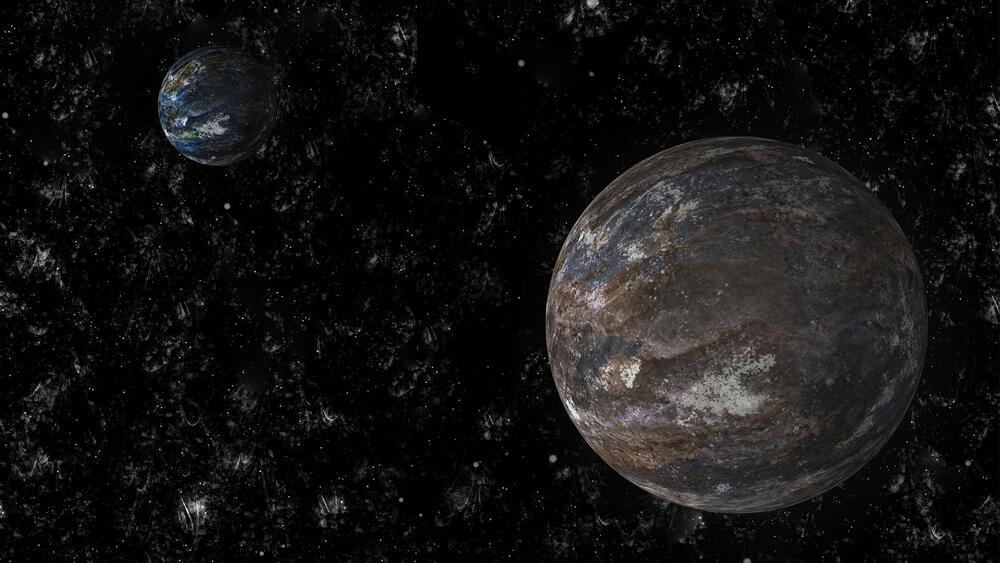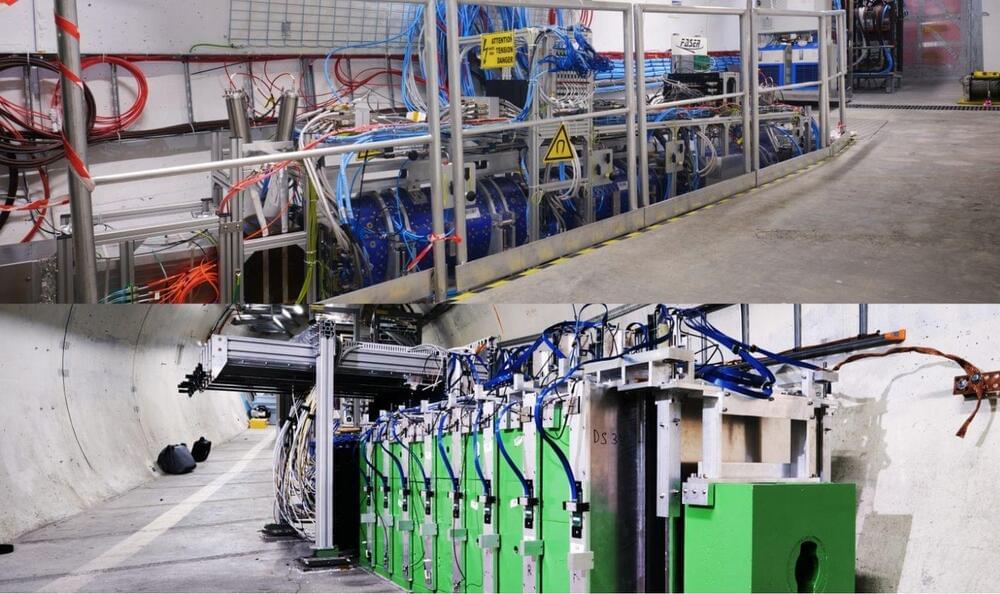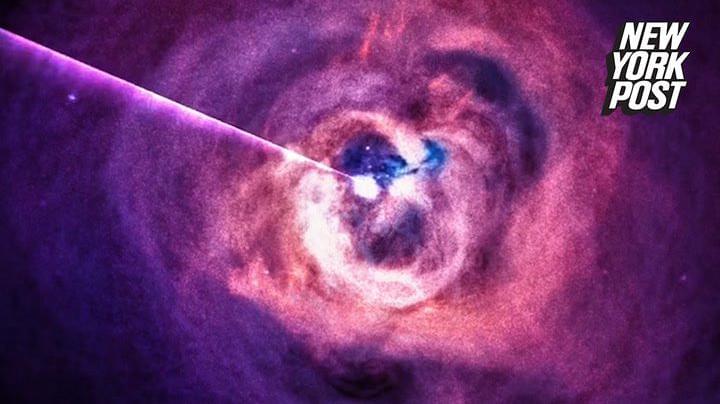Year 2022 😗
A sparsified SYK model is constructed using learning techniques and the corresponding traversable wormhole dynamics are observed, representing a step towards a program for studying quantum gravity in the laboratory.


Year 2022 😗
WASHINGTON, Nov 30 (Reuters) — In science fiction — think films and TV like “Interstellar” and “Star Trek” — wormholes in the cosmos serve as portals through space and time for spacecraft to traverse unimaginable distances with ease. If only it were that simple.
Scientists have long pursued a deeper understanding of wormholes and now appear to be making progress. Researchers announced on Wednesday that they forged two miniscule simulated black holes — those extraordinarily dense celestial objects with gravity so powerful that not even light can escape — in a quantum computer and transmitted a message between them through what amounted to a tunnel in space-time.
It was a “baby wormhole,” according to Caltech physicist Maria Spiropulu, a co-author of the research published in the journal Nature. But scientists are a long way from being able to send people or other living beings through such a portal, she said.
Researchers have created a computer simulation of early universe in the epoch after the Big Bang. It’s designed to help them interpret real data in future.

Generative AI, the technology behind ChatGPT, is going supernova, as astronomers say, outshining other innovations for the moment. But despite alarmist predictions of AI overlords enslaving mankind, the technology still requires human handlers and will for some time to come.
While AI can generate content and code at a blinding pace, it still requires humans to oversee the output, which can be low quality or simply wrong. Whether it be writing a report or writing a computer program, the technology cannot be trusted to deliver accuracy that humans can rely on. It’s getting better, but even that process of improvement depends on an army of humans painstakingly correcting the AI model’s mistakes in an effort to teach it to ‘behave.’
Humans in the loop is an old concept in AI. It refers to the practice of involving human experts in the process of training and refining AI systems to ensure that they perform correctly and meet the desired objectives.


Primordial black holes older than the big bang could rewrite cosmology by providing evidence for a previous universe. It’s a wild idea, but some physicists think we’ve got a chance of finding them.
By Bernard Carr
I read enough to realize it’s in depth enough to make it worthwhile. I’ll finish tomorrow as it’s 10:35 pm and I’m beat. I need to rest for my mother’s cardiac rehab tomorrow. She had a heart attack about a month ago.
Ray Kurzweil discusses having a universe filled with Computronium.
He discusses this happening within 200 years if wormholes or some other means allow faster than light travel.
What would the computation limits of computronium be?

Although neutrinos are produced abundantly in collisions at the Large Hadron Collider (LHC), until now no neutrinos produced in such a way had been detected. Within just nine months of the start of LHC Run 3 and the beginning of its measurement campaign, the FASER collaboration changed this picture by announcing its first observation of collider neutrinos at this year’s electroweak session of the Rencontres de Moriond. In particular, FASER observed muon neutrinos and candidate events of electron neutrinos. “Our statistical significance is roughly 16 sigma, far exceeding 5 sigma, the threshold for a discovery in particle physics,” explains FASER’s co-spokesperson Jamie Boyd.
In addition to its observation of neutrinos at a particle collider, FASER presented results on searches for dark photons. With a null result, the collaboration was able to set limits on previously unexplored parameter space and began to exclude regions motivated by dark matter. FASER aims to collect up to ten times more data over the coming years, allowing more searches and neutrino measurements.
FASER is one of two new experiments situated at either side of the ATLAS cavern to detect neutrinos produced in proton collisions in ATLAS. The complementary experiment, SND@LHC, also reported its first results at Moriond, showing eight muon neutrino candidate events. “We are still working on the assessment of the systematic uncertainties to the background. As a very preliminary result, our observation can be claimed at the level of 5 sigma,” adds SND@LHC spokesperson Giovanni De Lellis. The SND@LHC detector was installed in the LHC tunnel just in time for the start of LHC Run 3.

This is a galactic-sized problem. Scientists revealed Tuesday that galaxy PBC J2333.9–2343 has been reclassified after discovering a supermassive black hole that is currently facing our solar system, reports Royal Astronomical Society. Alien-hunting physicist on mission to prove meteorite that hit Earth is extraterrestrial probe Asteroid that could wipe out a city is near.
Read more ❯.
